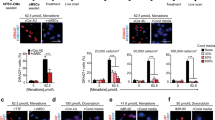Abstract
Current treatments for myocardial infarction have significantly reduced the acute mortality of ischemic cardiomyopathy. This reduction has resulted in the survival of a large cohort of patients left with a significant 'myocyte deficit'. Once this deficit leads to heart failure there is no available therapy to improve long-term cardiac function. Recent developments in stem cell biology have focused on the possibility of regenerating contractile myocardial tissue. Most of these approaches have entailed the transplantation of exogenous cardiac-regenerating cells. Recently, we and others have reported that the adult mammalian myocardium, including that in humans, contains a small pool of cardiac stem and progenitor cells (CSCs) that can replenish the cardiomyocyte population and, in some cases, the coronary microcirculation. The human CSCs (hCSCs) are involved in maintaining myocardial cell homeostasis throughout life and participate in remodeling in cardiac pathology. They can be isolated, propagated and cloned. The progeny of a single cell clone differentiates in vitro and in vivo into myocytes, smooth muscle and endothelial cells. Surprisingly, in response to different forms of stress, hCSCs acquire a senescent, dysfunctional phenotype. Strikingly, these nonfunctional CSCs constitute around 50% of the total CSC pool in older individuals—those most likely to be candidates for hCSC-based myocardial regeneration. Therefore, the challenge to develop clinically effective therapies of myocardial regeneration is twofold: to produce the activation of the hCSCs in situ in order to obviate the need for cell transplantation, and to elucidate the mechanisms responsible for hCSC senescence in order to prevent or reverse its development.
This is a preview of subscription content, access via your institution
Access options
Subscribe to this journal
Receive 12 print issues and online access
$209.00 per year
only $17.42 per issue
Buy this article
- Purchase on Springer Link
- Instant access to full article PDF
Prices may be subject to local taxes which are calculated during checkout


Similar content being viewed by others
References
Rumyantsev PP (1977) Interrelations of the proliferation and differentiation processes during cardiac myogenesis and regeneration. Int Rev Cytol 51: 186–273
Anversa P and Kajstura J (1998) Ventricular myocytes are not terminally differentiated in the adult mammalian heart. Circ Res 83: 1–14
Anversa P and Olivetti G (2002) Cellular basis of physiological and pathological myocardial growth. In Handbook of Physiology: The Cardiovascular System, 75–144 (Eds Fozzard HA and Solaro RJ) Oxford: Oxford University Press
Tam SK et al. (1995) Cardiac myocyte terminal differentiation. Potential for cardiac regeneration. Ann NY Acad Sci 752: 72–79
Nadal-Ginard B et al. (2003) Myocyte death, growth, and regeneration in cardiac hypertrophy and failure. Circ Res 92: 139–150
Quaini F et al. (2002) Chimerism of the transplanted heart. N Engl J Med 346: 5–15
Urbanek K et al. (2003) Intense myocyte formation from cardiac stem cells in human cardiac hypertrophy. Proc Natl Acad Sci USA 100: 10440–10445
Laflamme MA et al. (2002) Evidence for cardiomyocyte repopulation by extracardiac progenitors in transplanted human hearts. Circ Res 90: 634–640
Anversa P and Nadal-Ginard B (2002) Myocyte renewal and ventricular remodelling. Nature 415: 240–243
Nadal-Ginard B et al. (2003) A matter of life and death: cardiac myocyte apoptosis and regeneration. J Clin Invest 111: 1457–1459
Laugwitz KL et al. (2005) Postnatal isl1+ cardioblasts enter fully differentiated cardiomyocyte lineages. Nature 433: 647–653
Bayes-Genis A et al. (2004) Cardiac chimerism in recipients of peripheral-blood and bone marrow stem cells. Eur J Heart Fail 6: 399–402
Beltrami AP et al. (2003) Adult cardiac stem cells are multipotent and support myocardial regeneration. Cell 114: 763–776
Doetsch F et al. (1999) Subventricular zone astrocytes are neural stem cells in the adult mammalian brain. Cell 97: 703–716
Torella D et al. (2005) Cardiac stem and progenitor cell biology for regenerative medicine. Trends Cardiovasc Med 15: 229–236
Messina E et al. (2004) Isolation and expansion of adult cardiac stem cells from human and murine heart. Circ Res 95: 911–921
Beltrami AP et al. (2001) Evidence that human cardiac myocytes divide after myocardial infarction. N Engl J Med 344: 1750–1757
Urbanek K et al. (2005) Myocardial regeneration by activation of multipotent cardiac stem cells in ischemic heart failure. Proc Natl Acad Sci USA 102: 8692–8697
Sharpless NE (2004) Ink4a/Arf links senescence and aging. Exp Gerontol 39: 1751–1759
Torella D et al. (2004) Cardiac stem cell and myocyte aging, heart failure, and insulin-like growth factor-1 overexpression. Circ Res 94: 514–524
Chimenti C et al. (2003) Senescence and death of primitive cells and myocytes lead to premature cardiac aging and heart failure. Circ Res 93: 604–613
Torella D et al. (2004) Local activation of cardiac stem cells repairs the infarcted heart and improves survival [abstract]. Circulation 110 (Suppl III): 170
Oh H et al. (2003) Cardiac progenitor cells from adult myocardium: homing, differentiation, and fusion after infarction. Proc Natl Acad Sci USA 100: 12313–12318
Matsuura K et al. (2004) Adult cardiac Sca-1-positive cells differentiate into beating cardiomyocytes. J Biol Chem 279: 11384–11391
Martin CM et al. (2004) Persistent expression of the ATP-binding cassette transporter, Abcg2, identifies cardiac SP cells in the developing and adult heart. Dev Biol 265: 262–275
Author information
Authors and Affiliations
Corresponding author
Ethics declarations
Competing interests
The authors declare no competing financial interests.
Rights and permissions
About this article
Cite this article
Torella, D., Ellison, G., Méndez-Ferrer, S. et al. Resident human cardiac stem cells: role in cardiac cellular homeostasis and potential for myocardial regeneration. Nat Rev Cardiol 3 (Suppl 1), S8–S13 (2006). https://doi.org/10.1038/ncpcardio0409
Received:
Accepted:
Issue Date:
DOI: https://doi.org/10.1038/ncpcardio0409
This article is cited by
-
Pharmacological inhibition of mTOR attenuates replicative cell senescence and improves cellular function via regulating the STAT3-PIM1 axis in human cardiac progenitor cells
Experimental & Molecular Medicine (2020)
-
Resident c-kit+ cells in the heart are not cardiac stem cells
Nature Communications (2015)



